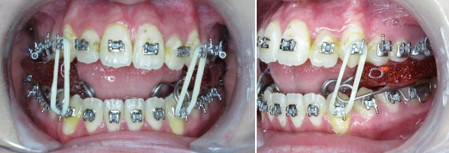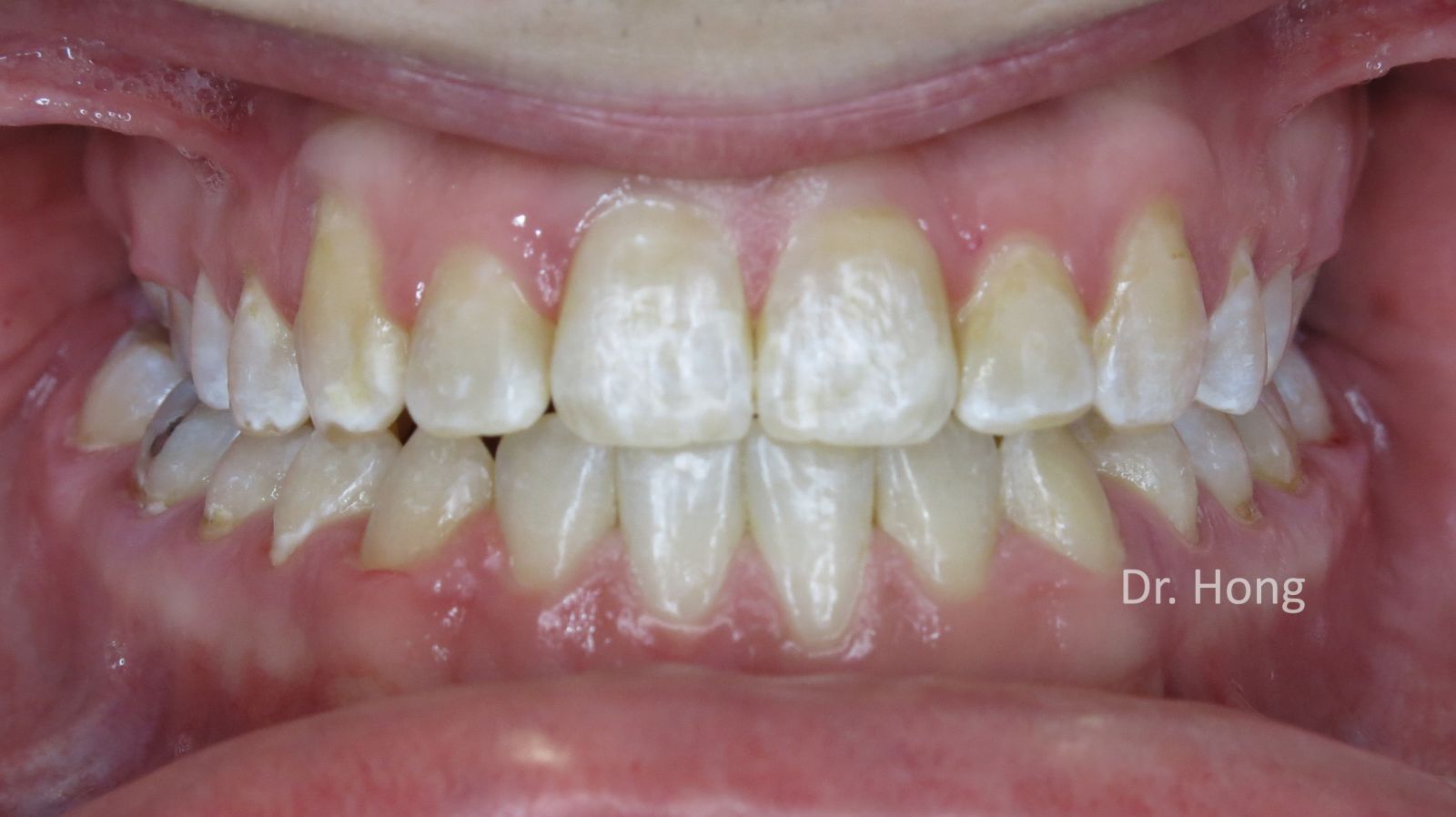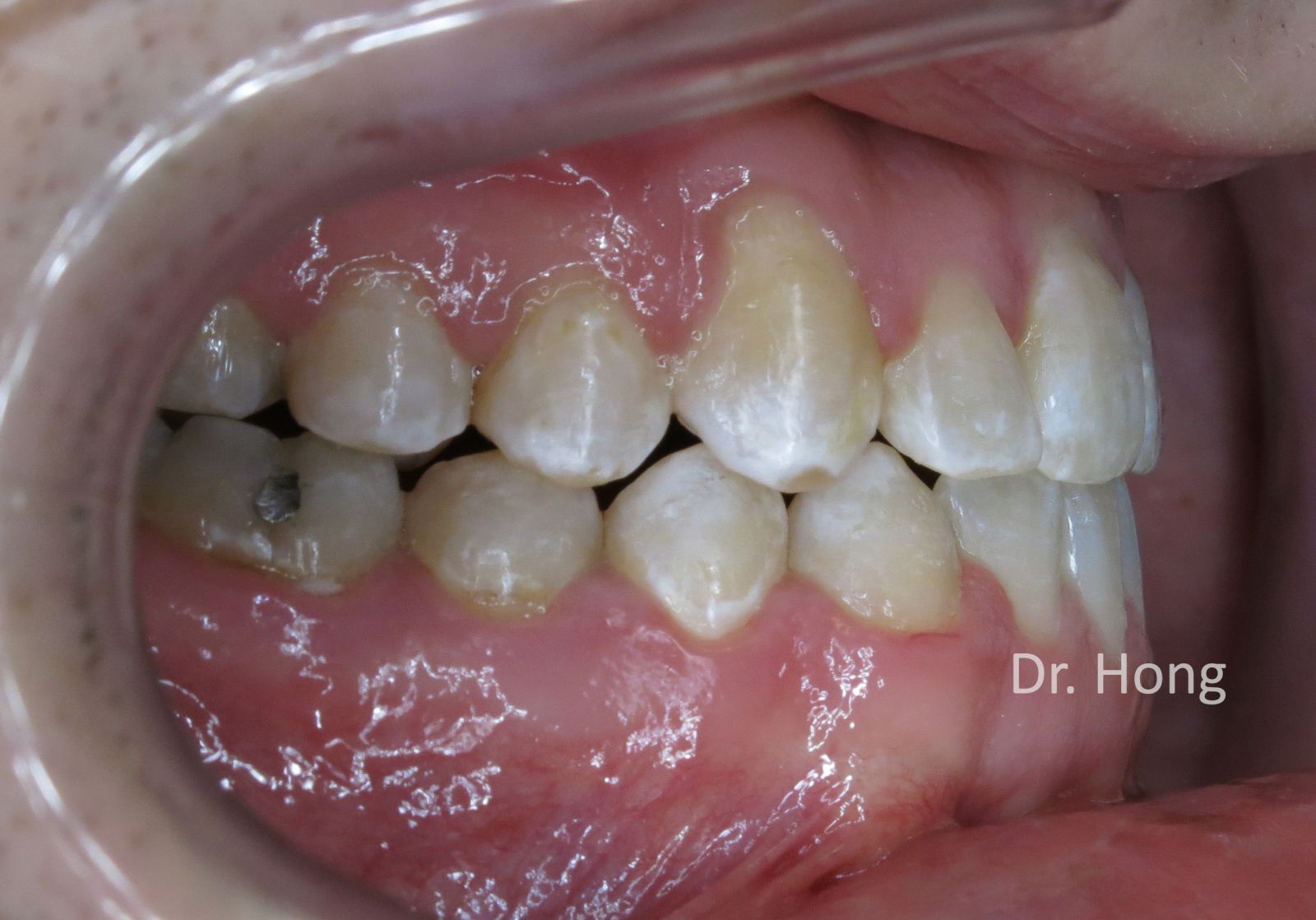Non-surgical and Non-extraction orthodontic treatment for complex malocclusion
Severe bite problems usually in one way or another involve underlying skeletal discrepancy. Overbite is typically a problem of retrognathic mandible, also known as under-development of the lower jaw. Underbite is most frequently associated with a retrognathic maxilla (under-development of upper jaw) or sometimes a combination of retrognathic maxilla and prognathic mandible (over-growth of the lower jaw). Open bite can result from abnormal oral habits as well as excessive growth of the jaw structure in the vertical dimension.
Traditionally, severe bite problem with an underlying skeletal component usually require a combination of orthodontic treatment and orthognathic surgery (jaw surgery). Jaw surgery will help reposition the jaw structure in a more ideal position, which improves the bite and sometimes improves the facial profile.
Surgical treatment has some inherent risks. The most common side effect is temporary paresthesia (abnormal sensation to the skin including tingling, pricking, and numbness). In rare cases paresthesia could be permanent.
Many people are unwilling to undergo surgery due to the invasiveness and/or added financial burden.
Our orthodontists have developed techniques to help solve complex bite problem without involving orthognathic surgery and often no extraction required.
We are also able to correct difficult problems with Invisalign®.
Case 1
Before:
- Severe open bite with excessive vertical height of the jaw structures.
- Underbite due to retrognathic maxilla.
- Dental crowding due to construction of the dental arches.
- Only contact on the molars.
- Orthognathic surgery was recommended by another orthodontist.

Progress:
- Full braces to widen the arches and correction crowding.
- Bite block and elastics to help intrude the posterior teeth and close the anterior open bite.

After:
- Close the open bite. Contacts on all anterior and posterior teeth. No surgery.

Case 2
Before:
- Under bite and deep bite due to retrognathic maxilla (under-development of the upper jaw).
- Asymmetrical bite. Lower jaw deviated toward the right side.
- Orthognathic surgery was recommended by another orthodontist.

Progress:
- Bite ramp to open the deep overbite.
- Upper braces and lower Carriere® Distalizer to help correct the underbite.
- Picture taken five months into treatment.

- Severe underbite and crossbite are corrected without extraction and without surgery.


Case 3
Clear aligners are used to correct many difficult orthodontic problems for this patient.
Before:
- Class III. Anterior crossbite. Severe crowding.

Progress:
- Bite ramp on the upper posterior teeth to unlock the anterior crossbite.
- The lower molars are moved back to create space for aligning lower anterior teeth. Notice the space developed behind the lower canine.
- The bite relationship improved with elastics.

Final:
- Bite and crowding corrected without braces, no extraction and no surgery.

Case 4
Clear aligners used to correct a severe 10mm overjet.
Before:
- Full cusp Class II. Impinging overbite. 10mm overjet. Proclined upper incisors.

Progress:
- Start with Invisalign Mandibular advancement. Corrected to ½ cusp Class II relationship.
- Switch to elastics to finish the bite correction.

Final:
- Severe overbite problem corrected without braces, no extraction, and no surgery.

Case 5
Clear aligners to correct severe open bite.
Patient fractured the lower jaw during motor vehicle accident. Surgeon at the hospital emergency room was not able to re-set the jaw at the correct bite position.
Before:
- Only the molars are in contact.

Progress:
- Invisalign was used to intrude the posterior teeth. Large rectangular attachments on the posterior teeth is critical to control the tooth movement.
- Elastics were used to extrude the anterior teeth.
- Open bite closed in five months with combination of Invisalign and elastics.

Final:
- Severe open bite corrected without braces, no extraction, and no surgery.
- Total Invisalign treatment time of eight months.

